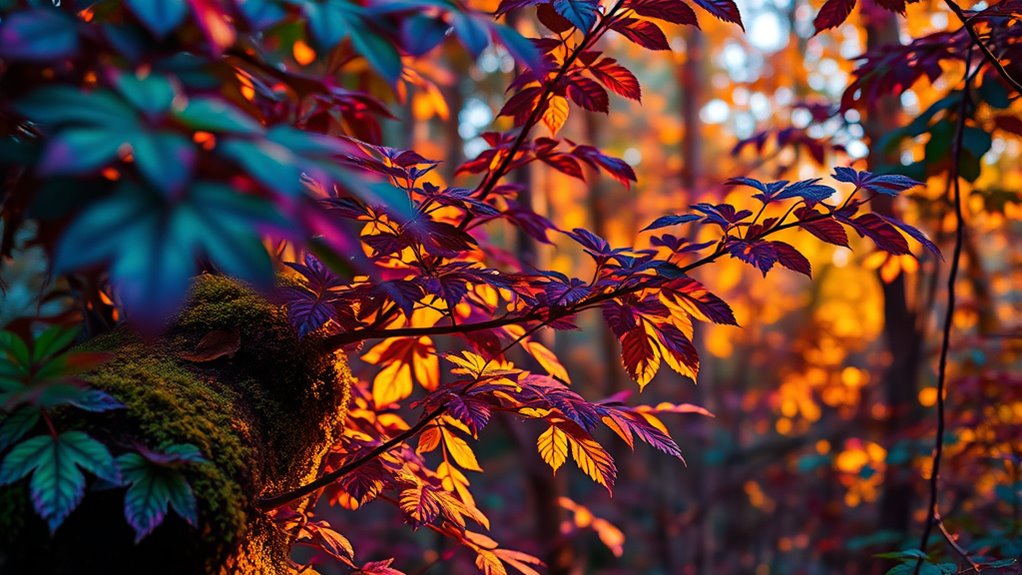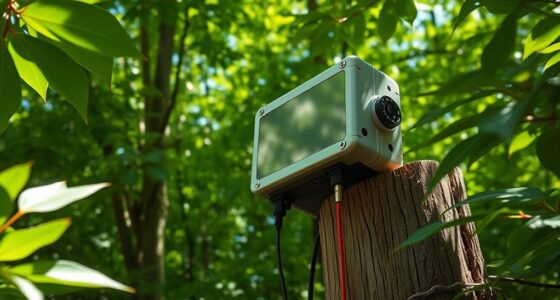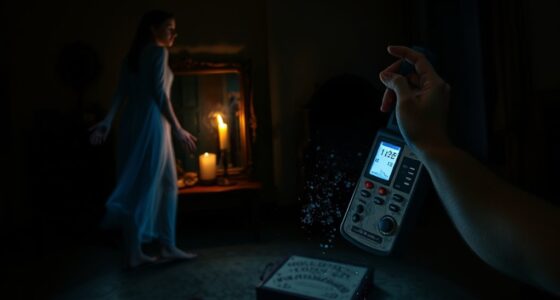To start full-spectrum photography, you’ll need to modify your camera by removing or bypassing internal filters that block UV and IR light. Use manual settings to control aperture, shutter speed, and ISO, with longer exposures for infrared captures. Attach appropriate filters like IR or UV filters to limit light to specific wavelengths. Keep your camera stable with a tripod, shoot in RAW, and adjust white balance during post-processing. Exploring these steps further will reveal how to perfect your technique.
Key Takeaways
- Convert your camera for full-spectrum by removing or modifying internal filters to enable IR and UV capture.
- Use manual mode to control aperture, shutter speed, and ISO for optimal exposure in different spectra.
- Attach appropriate filters (infrared or ultraviolet) to limit light to desired wavelengths during shooting.
- Use a tripod and RAW format to ensure sharp images and flexibility in post-processing adjustments.
- Adjust white balance and exposure settings during editing to enhance full-spectrum image details.

Have you ever wondered what your photos would look like if you captured more than just visible light? Full-spectrum photography opens the door to seeing beyond the ordinary, revealing details in ultraviolet and infrared ranges that your eyes can’t perceive. To get started, you’ll need to understand how to manipulate your camera settings and use light filters effectively. These tools are essential because they help you control what wavelengths reach your camera sensor, allowing you to capture the full spectrum of light. Understanding the spectrum of light is crucial, as it encompasses all the wavelengths you can attempt to capture with your camera. First, familiarize yourself with your camera’s capabilities. Many standard digital cameras are sensitive to infrared and ultraviolet light, but they often have internal filters blocking these wavelengths. You’ll need to remove or modify these filters, often through a process called “full-spectrum conversion.” Once your camera is converted, you can adjust camera settings to optimize your images. Use manual mode to control aperture, shutter speed, and ISO precisely. For infrared photography, a wider aperture can help gather more light, but you’ll also need longer exposure times to compensate for the reduced light sensitivity. Keep ISO low to minimize noise, which becomes more prominent in infrared images. Light filters are your primary tools for controlling the spectrum of light entering your camera. Infrared filters block visible light, letting only infrared light pass through, which is essential for capturing infrared images. Conversely, ultraviolet filters block ultraviolet light if you’re interested in UV photography. You’ll need to experiment with different light filters to see how each affects your final image. When using filters, always check the filter’s specifications to ensure it matches your camera’s modified spectrum sensitivity. Attach the filters securely to your lens and double-check that they’re clean to avoid unwanted artifacts and distortions. Adjust your camera settings based on your lighting conditions and the desired effect. For infrared photography, you might need to increase exposure times substantially because infrared light is less intense than visible light. Use a tripod to keep your camera steady during longer exposures. Consider shooting in RAW format so you can fine-tune color and contrast during post-processing. Also, remember that full-spectrum images often benefit from custom white balance settings, which can be adjusted later to achieve the desired look.
Frequently Asked Questions
What Equipment Is Essential for Full-Spectrum Photography?
You need a camera capable of capturing full-spectrum light, along with specialized camera accessories like filters that block or allow specific wavelengths. A sturdy tripod helps with stability, and lighting setups are vital for controlling your scene’s illumination. Consider additional filters and lens filters designed for full-spectrum work. These tools guarantee you get clear, accurate images across the entire spectrum, enabling you to explore infrared, ultraviolet, and other light ranges effectively.
How Do I Process and Edit Full-Spectrum Images?
To process and edit your full-spectrum images, start with color correction to balance the unusual hues and achieve natural tones. Use photo editing software to enhance details, adjust contrast, and improve sharpness. You might also experiment with filters for creative effects. Remember, subtle adjustments often yield the best results. Regularly compare your edits to your original shot to guarantee your enhancements improve the image without overdoing it.
Are There Legal Considerations for Capturing Full-Spectrum Photos?
You should prioritize legal compliance and privacy concerns when capturing full-spectrum photos. Always obtain permission if you’re photographing private property or individuals, as laws vary by location. Be aware of privacy concerns, especially when photographing in public or sensitive areas. Respect local regulations and avoid infringing on others’ rights to prevent legal issues. Staying informed and cautious guarantees your full-spectrum photography remains lawful and respectful of others’ privacy.
Can Full-Spectrum Photography Be Used for Medical Analysis?
Think of full-spectrum photography as a medical detective’s magnifying glass. You can indeed use it for medical diagnostics and skin analysis, revealing details invisible to the naked eye. This technique helps identify skin conditions, monitor healing, or detect underlying health issues. However, always guarantee proper training and ethical considerations, as interpreting these images requires expertise. When used correctly, it transforms your camera into a powerful tool for medical insights.
How Does Full-Spectrum Photography Differ From Infrared Photography?
You’ll find that full-spectrum photography captures a wider range of light, including ultraviolet and infrared, thanks to enhanced sensor sensitivity. Infrared photography, however, mainly focuses on the infrared spectrum, often using filters to block visible light. This results in different color rendering, where full-spectrum images may appear more natural, while infrared photos tend to have a surreal, ghostly quality. The key difference lies in the spectrum each style emphasizes.
Conclusion
Think of full-spectrum photography as opening a secret garden hidden behind a plain door. With each step, you’re turning the key, revealing vibrant colors and unseen details. As you master this craft, you become the explorer, uncovering hidden worlds in your everyday scenes. Embrace the journey, knowing every shot is like discovering a new flower in your garden of light. Soon, your photos will bloom with magic, inviting others to see the world through your unique lens.









